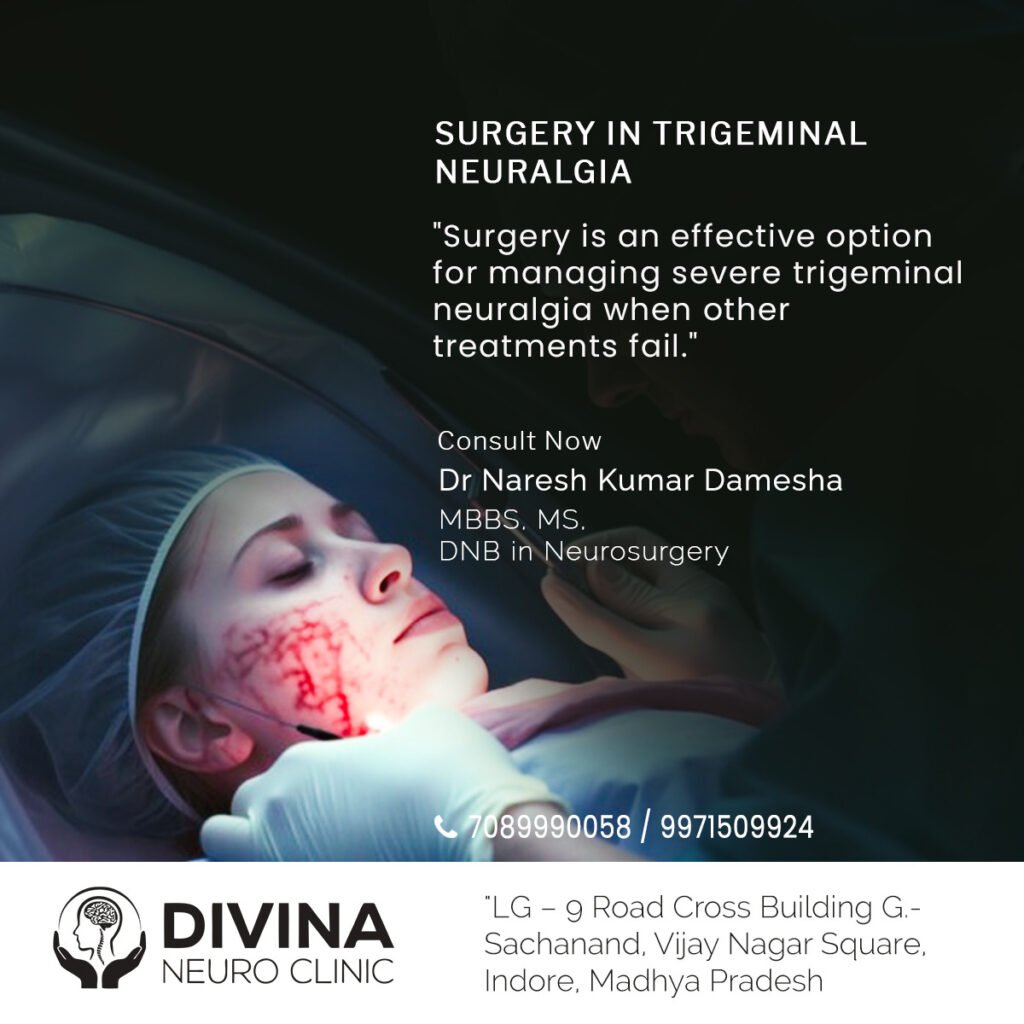Surgery in Trigeminal Neuralgia – Dr. Naresh Kumar Damesha
Surgery in Trigeminal Neuralgia
Trigeminal neuralgia is a chronic pain disorder that involves periods of sudden, severe facial pain along the course of the trigeminal nerve. For most patients, medications are the first line of treatment, such as anticonvulsants and muscle relaxants.
Over time, however, these drugs may either become ineffective or their side effects may become intolerable. It is then that surgery becomes an option for long-term relief from the debilitating pain.

What is Microvascular Decompression (MVD)
One of the most effective surgical treatments for trigeminal neuralgia is microvascular decompression. This procedure involves accessing the trigeminal nerve through a small incision behind the ear.
The surgeon identifies blood vessels pressing on the nerve and places a small cushion between the nerve and the vessel to prevent compression. MVD has a high success rate and can provide lasting relief without causing numbness.
However, it is a major surgical procedure and, as such, carries some risks of hearing loss, facial weakness, or cerebrospinal fluid leakage, though these complications are very rare.
Percutaneous Procedures for Trigeminal Neuralgia
For patients who, due to age or health reasons, cannot withstand a major surgery, percutaneous procedures are less invasive. They include the following: balloon compression, glycerol injections, and radiofrequency rhizotomy.
These techniques involve inserting a needle or catheter through the cheek to reach the trigeminal nerve, where the conveyed nerve is either compressed or partially destroyed to block the pain signals.
These procedures take less time, are usually performed on an outpatient, and require shorter recovery times. On the other hand, their effects often fade with time, and repeated treatment may be needed.
What is Stereotactic Radiosurgery (Gamma Knife)
Stereotactic radiosurgery, also known as Gamma Knife radiosurgery, is a non-invasive treatment that involves the precise delivery of radiation to portions of the trigeminal nerve responsible for transmitting these painful signals.
This option is suitable for patients who are not candidates for traditional surgery or simply want less invasive alternatives. It is highly precise, with minimal surrounding tissue damage, and usually requires only one session.
Although effective in reducing pain, it may take weeks for the patients to experience relief and the patient also runs a risk of facial numbness.
Conclusion
Surgery offers hope to patients with trigeminal neuralgia who do not find relief through medications. Starting from microvascular decompression, up to minimally invasive techniques, including percutaneous procedures and radiosurgery, several options are available.
Each technique has its advantages and disadvantages; however, due to the advances of medical techniques, long-term pain relief has been possible for many with this debilitating condition.
Dr. Naresh Kumar Damesha
Consulting Neurosurgeon

Leave a Reply